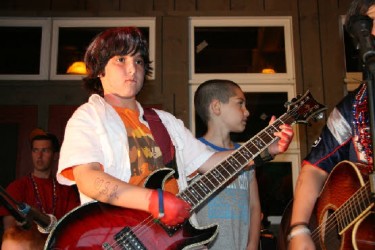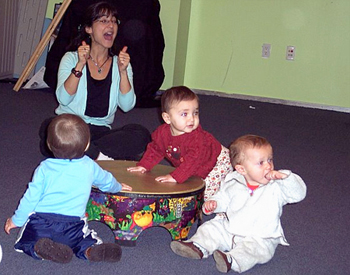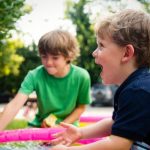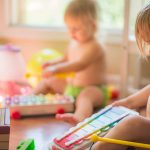 The arts provide such significant support in education. Unfortunately, they are often the first areas to be cut from budgets, requiring grant funding and private donations if they are to be offered at all. In my children’s NYC public K-8, there is not a school (instrumental or vocal) ensemble, but there is a full-time art teacher, full-time drama teacher, full-time dance teacher, and full-time story-telling teacher- it’s wonderful – they all incorporate the curriculum into their projects and performances. The Kindergarten classes have created plays with the 7th graders; 7th & 8th graders perform a musical theater production each spring.
The arts provide such significant support in education. Unfortunately, they are often the first areas to be cut from budgets, requiring grant funding and private donations if they are to be offered at all. In my children’s NYC public K-8, there is not a school (instrumental or vocal) ensemble, but there is a full-time art teacher, full-time drama teacher, full-time dance teacher, and full-time story-telling teacher- it’s wonderful – they all incorporate the curriculum into their projects and performances. The Kindergarten classes have created plays with the 7th graders; 7th & 8th graders perform a musical theater production each spring.
In addition, there are teaching artists through collaboration with Lincoln Center, providing music and additional experiences incorporating arts into the curriculum. Learning about the American Revolution is supported by creating job pamphlets and performing a play; Japanese culture and history is introduced through guest performers sharing Taiko drumming and the learning continues through folk tales in storytelling; becoming familiar with their own community and neighborhood, students create maps and model subways in art class.
In general, arts experiences accommodate students with different learning styles and also those students with emotional or behavioral issues. Students who have trouble expressing themselves verbally may excel in painting, dancing or music. Teachers tend to believe their responsibility is to provide each student with an equal opportunity to succeed in life – it is essential to keep in mind this important aspect of learning and intelligence.
 My younger son playing drums at camp.
My younger son playing drums at camp.
What can families do at home to enhance learning through the arts? Playing music often is a great start, live or recorded – whatever you have available. Exposing children to various genres can expand their horizons – and there is research supporting the benefits of background music in classrooms, such as improved attention to task and therefore increased memory of details. Take time to dance together to your favorite songs – a great way to enjoy each other’s company while developing balance and coordination. Play with your children – using dolls and stuffed animals or costumes to act out stories and scenes supports creative expression and problem solving skills. Color, draw, or paint together – use modeling clay or play-dough. Including a variety of art mediums will introduce your child to different textures and tactile experiences, while providing opportunities to learn about colors and shapes.
The arts can help children (and adults) become more motivated to learn and remain interested in learning. Often times, children who develop strong practice techniques in their music lessons can carry that over to strategies for homework and studying. I definitely encourage you to incorporate the arts into your own life. It’s engaging and exciting for the whole family!
Recent research has demonstrated the following:

- There appears to be a strong relationship between the ability to keep a steady beat and the ability to read.
- Music training can improve young children’s future abilities to solve complex math and geometry problems, navigate ships, design skyscrapers, and improve intelligence–perhaps permanently.
- Spatial reasoning skills of preschool children given eight months of music lessons far exceeded that of preschoolers without music training.
- Circle dances can help infants recognize patterns, a basic learning skill. Music and movement have been shown to be effective because they engage the whole child.
- Theater games incorporating sign language have helped deaf and hearing students develop language and communication skills, in addition to improving emotional self-expression.
- Further research into using drama as a learning tool indicates that all students can benefit from dramatic play – from early childhood onward into young adulthood. In addition, role playing can assist in problem solving and peer mediation.
- Creating works of art aids in the process of color identification and matching.
- In Baby Fingers classes, music has proven to be a memory aid for parents to learn sign language and a mediator for babies/toddlers to increase their vocabularies.
Lora Heller, MS, LCAT, MT-BC, CEIM
Founding Director of Baby Fingers LLC
www.mybabyfingers.com




Comments are closed.